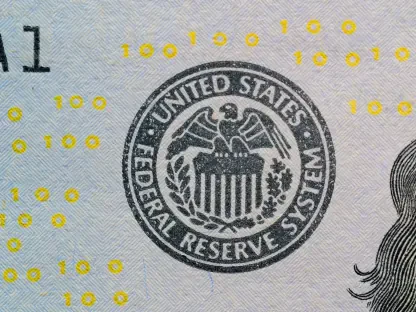Navigating the complexities of personal loan interest rates can be daunting, especially with the shifts happening in 2025. Personal loans can serve various needs, from consolidating debt to funding home renovations or unforeseen expenses. Understanding the factors that influence loan rates will help borrowers make informed decisions and better anticipate their financial obligations. With average rates currently at 20.78% APR, a notable increase from prior weeks, it’s crucial for consumers to comprehend the nuances of loan types, lender requirements, and borrowers’ financial health. Familiarizing oneself with the dynamics of credit scores, economic influences, and lender practices can demystify the process of securing a personal loan and ensure choices align with long-term financial goals.
Current Trends in Personal Loan Rates
In 2025, personal loan interest rates exhibit significant variability, largely influenced by borrowers’ credit scores and the evolving economic landscape. While the average stands at approximately 20.78% APR, borrowers with exceptional credit scores may qualify for more favorable conditions. Institutions like Reach Financial offer rates beginning at 5.99%, though not everyone may benefit from such advantageous terms. The diverse assortment of lenders, including banks, credit unions, and online platforms, each presents distinct rates, dependent on operational costs and risk assessments. Economic elements, such as the Federal Reserve’s monetary policies, also directly impact these rates. Decisions on the federal funds rate alter the borrowing costs for banks, subsequently affecting consumer interest rates.
The Federal Reserve’s maneuvers are central to managing economic health, aiming to stimulate growth or curb inflation. During prosperous periods, a spike in loan demand can occur as businesses expand and consumer spending increases, potentially leading to higher interest rates as lenders tap into this demand. Conversely, in times of financial uncertainty or recession, lenders might lower rates to encourage borrowing. These economic contexts underscore the importance of understanding when to secure a personal loan. It’s beneficial for borrowers to remain attuned to these factors to anticipate how fluctuation in the federal funds rate might influence their loans.
Influencing Factors on Loan Interest Rates
Several critical factors shape the interest rates borrowers receive on personal loans. Creditworthiness emerges as a paramount criterion, with higher credit scores generally leading to more favorable loan terms. Lenders scrutinize credit scores to gauge borrowers’ reliability, as higher scores often translate to lower perceived risk, justifying reduced rates. Additionally, one’s debt-to-income ratio (DTI) is vital in assessing eligibility, with lower DTIs signaling better financial management and stability to potential lenders, potentially resulting in lower rates. Income regularity and loan term length further contribute to the overall rate determination. Shorter loan terms frequently yield lower interest rates because of reduced lending risk, while fluctuating income or job stability can result in more conservative loan offerings.
Understanding the distinctions between fixed-rate and variable-rate loans is essential to managing financial commitments. Fixed-rate loans offer stability with unchanged rates throughout the loan term, allowing for predictable monthly payments. This consistency provides peace of mind, especially in fluctuating economic times. In contrast, variable-rate loans are tied to index rates, with their payments subject to change. This variability can result in unpredictable financial commitments, though the potential for lower rates exists if market conditions shift favorably. An awareness of these distinctions can guide borrowers in selecting an option that best suits their risk tolerance and repayment comfort, ensuring they maintain stable finances regardless of external economic pressures.
Strategies for Securing Favorable Loan Conditions
To secure the best possible personal loan rates, borrowers should focus on enhancing financial profiles and meeting lenders’ criteria. The most effective strategy often begins with improving credit scores. Ensuring timely bill payments, reducing credit card balances, and avoiding unnecessary credit inquiries fortify creditworthiness, depicting a borrower as responsible and low risk. Additionally, regular monitoring of one’s credit report can uncover errors needing correction and identify weak points for potential improvement. Lowering the debt-to-income ratio is another crucial factor. By minimizing existing debts, individuals can improve their DTI, positively impacting the interest rates offered.
Another viable approach is considering the addition of a co-signer or co-borrower if personal credit scores are lacking. A financially stable co-signer can reassure lenders about creditworthiness, leading to more favorable loan terms. Furthermore, comparing offers from various types of lenders, including traditional banks, credit unions, and online platforms, equips borrowers with a comprehensive understanding of available options. By evaluating different terms and fees, borrowers can select lenders who offer the best alignment with their credentials and financial goals. Engaging in pre-approval processes can also aid borrowers. This approach allows individuals to glimpse potential terms without impacting credit scores, positioning them for a strategic loan application aligned with their interests.
Alternatives and Considerations in 2025 Loan Landscape
Those considering personal loans in 2025 should be aware of alternative lending options and potential pitfalls. Balance transfer credit cards present an intriguing option with intro periods offering zero or low interest. Nevertheless, swift repayment is vital to avoid spikes once the introductory phase concludes. Home equity loans and HELOCs provide secured borrowing avenues, often with better rates, yet carry the caveat of risking one’s home in default scenarios. Moreover, peer-to-peer lending platforms have gained prominence, offering competitive rates by connecting borrowers with individual investors, though it’s vital to carefully evaluate terms and potential implications.
Understanding both the advantages and disadvantages of low interest loans can inform decisions. The appeal of reduced borrowing costs and manageable repayments can benefit credit scores if managed judiciously. However, rigid eligibility requirements or hidden fees can complicate or elongate the approval process. To mitigate complications, borrowers should thoroughly vet lenders and comprehend the terms, particularly when navigating secured versus unsecured options. An awareness of the specific lender’s operational style—traditional bank, credit union, or online entity—also unveils potential variations in offer terms. With diligence and informed decision-making, borrowers can identify and secure financing solutions aligning with situational and financial objectives.
Future Considerations and Economic Implications
Navigating the intricacies of personal loan interest rates can seem overwhelming, particularly with changes anticipated in 2025. Personal loans serve diverse purposes, such as debt consolidation, renovating homes, or covering unexpected costs. To make prudent borrowing decisions and foresee financial responsibilities, it’s essential to comprehend the elements influencing loan rates. Currently, average interest rates have risen to 20.78% APR, marking a significant jump from previous weeks. This highlights the necessity for consumers to grasp the details about various loan types, lender criteria, and the financial situation of borrowers.
A thorough understanding of credit scores, economic conditions, and lenders’ practices can simplify securing a personal loan, ensuring choices support long-term financial objectives. Credit scores significantly impact loan rates, with higher scores potentially enabling better rates. Economic factors, including inflation or recession, can affect interest rates nationwide. Additionally, different lenders have varying requirements and terms, so it’s wise to compare them. Knowledge in these areas empowers borrowers to choose loans that align with financial goals, ensuring they can meet repayment terms without jeopardizing their financial stability.









